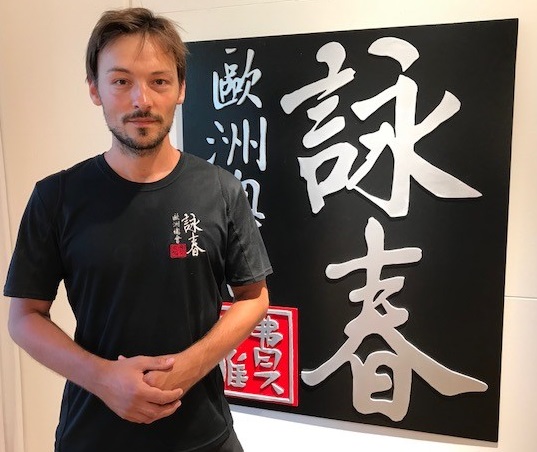Jort Schuitemaker: More with less

Ever since I was little, I have been interested in martial arts. As a kid, I took judo classes and during my teenage years I practiced ninjutsu and karate for a while. A few years ago, I wanted to try something else and I thought of choosing either boxing or Ving Tsun (also known as Wing Chun) kung fu. I decided to go for the latter and I have never regretted that decision. Already during my first class I was impressed by the directness, speed and effectiveness of Ving Tsun. And after training for a few years, of which now almost one year at Dave’s school, I still notice every time just how awesome, logical and clever Ving Tsun is. Moreover, it is fun to do and it has given me more energy, focus and self-confidence.
Ving Tsun kung fu
Ving Tsun is not a combat sport, designed for competitions and based on rules. It is also not a self-defence course, in which we simulate all kinds of situations and learn various techniques without any internal logic or coherence. You could call it a martial art, if you define art as the creative application of skills. We do, however, not aim for elegance, acrobatics or complexity. We aim for effectiveness, efficiency and simplicity. The point is to develop practical skills that can protect us or others if necessary.
Ving Tsun is probably best described as a combat system, combat skill or applied combat science. It is focused on close-quarters combat and based on the concept of ‘economy of motion’: we want to use our bodies efficiently in order to end a fight in as little time and with as few moves and little muscular force as possible. Our force mainly comes from our position vis-à-vis the opponent, the structure of our bodies and the speed of our movements.
To use our bodies efficiently, we are guided by a set of principles or concepts that are based on science and logic and tell us how we can best stand, move and fight. Examples of these are the centreline concept, keeping the elbows down, facing our opponents square-on, moving forward as soon as an opportunity presents itself, simultaneous defence and attack, and taking shortest route to the target. These and other concepts make Ving Tsun what it is: a very effective combat system.
Training
In Ving Tsun it is important to have a solid body structure, to be able to adapt and respond quickly, to be able to feel where and when to attack, to execute all moves in a relaxed, short and explosive way and to use the whole body as one. During the training sessions we learn to continuously improve all of this and to apply it under increasing pressure. We do so by training the three basic forms, the wooden dummy, the two weapons forms, various partner exercises and drills and (controlled) sparring. The goal is to teach our bodies good reflexes, so that in a real-life situation – which will hopefully never occur – we will automatically respond in the right way and be able to end the fight quickly.

For someone new to Ving Tsun, it will take a little time to get used to the particular movements and exercises of the system. After a couple of classes, however, that starts to change. You get a better understanding of the system and start to ‘reprogram’ your body, making your responses better, more natural and faster. To become good at it, you need to train a lot, with a good teacher. After all, Ving Tsun is a form of kung fu, which could be translated as ‘skill acquired through time and effort’. But this progression is exactly what makes it fun. And the more you train, the faster your skills will improve and the more fun it will be.
The school
Before I started training at Dave’s school, I was training at a school where a different interpretation of Wing Chun is taught. I decided to change schools because the interpretation taught here (the lineage of Ip Man – Wong Shun Leung – Philipp Bayer) is the most logical, dynamic and effective Ving Tsun system I know.
Moreover, Dave is a good, approachable and motivating teacher who has a lot of knowledge, experience and passion for Ving Tsun. His perspective on Ving Tsun is down-to-earth and realistic and he is able to explain well why we do the things the way we do. He also looks at every person individually to see what he or she has to work on and he challenges you to train slightly above your current level, to continuously improve yourself and to develop a fighter’s mentality. This helps you to progress quickly.
The open, relaxed and friendly atmosphere and the variation in the indoor and outdoor classes make it fun to train. In this school you won’t find big egos and hierarchies, vagueness and secretiveness, expensive, long-term contracts or other (commercial) bullshit which you will find in some other schools. Just people that want to improve their Ving Tsun skills together. A few times every year, Philipp Bayer visits the Netherlands to give a seminar. It is a great opportunity to train with people from other schools of the Ving Tsun Kung Fu Association Europe (VTKFAE) – always a nice and informative experience.
Bottom line, it you want to learn Ving Tsun well, you have come to the right place!

Meer info/More info?
Tel: +31 (0)6 2043 6015
Mail: info@wslvt.nl




